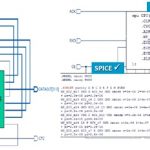Semiconductor IP is a focus of this year’s Design Automation conference and I’m excited to see a keynote by one of the leaders of this market segment. Even more interesting, Dr. Hossein Yassaie was knighted by the Queen in Her Majesty’s New Year Honours 2013. The award was given in recognition of his services to technology and innovation. Imagination Technologies also collaborated on the IP chapter in our book Fabless: The Transformation of the Semiconductor Industry and Hossein answered the question “What is Next for the Semiconductor Industry?” in Chapter 8. It really is an honor to work with Imagination Technologies and Sir Hossein Yassaie, absolutely.
The Great SoC Challenge ( IP to the Rescue!)
The system-on-chip (SoC) has revolutionized the semiconductor and electronics industries, providing ever-more compact designs that incorporate increasingly large amounts of functionality and performance. This integration, together with process technology scaling, has led to mass availability of affordable, low-power mobile and consumer products.
As the number of discrete IP blocks on a typical SoC continues to escalate, and as the complexity of each of those blocks is also on the rise, SoC developers are challenged to meet not only integration demands but also tight schedules, power and thermal constraints, aggressive cost targets, support for a dizzying array of standards and more. This is compounded by an insatiable consumer appetite for always-on global connectivity, long battery life and of course access to the latest technologies, such as ultra-high definition video and photorealistic graphics.
Silicon IP providers have stepped in to ensure continued innovation by providing high-performance, low-power technologies that help SoC companies meet their design requirements in this ever-more complex environment. IP will play an increasingly vital role going forward. By offering a comprehensive IP portfolio and market driven platforms across CPU, graphics, video and vision technologies, IP providers will help companies overcome their design challenges and address a growing number of exciting new applications and market opportunities.
The Design Automation Conference (DAC) is recognized as the premier event for the design of electronic circuits and systems and for electronic design automation (EDA) and silicon solutions. Since 1964, a diverse worldwide community of many thousands of professionals has attended DAC. They include system designers and architects, logic and circuit designers, validation engineers, CAD managers, senior managers and executives as well as researchers and academicians from leading universities. Close to 60 technical sessions selected by a committee of electronic design experts offer information on recent developments and trends, management practices and new products, and methodologies and technologies.
A highlight of DAC is its exhibition and suite area featuring leading and emerging EDA, silicon, intellectual property (IP) automotive, security and design services providers. The conference is sponsored by the Association for Computing Machinery (ACM), the Electronic Design Automation Consortium (EDA Consortium), and the Institute of Electrical and Electronics Engineers (IEEE), and is supported by ACM’s Special Interest Group on Design Automation (ACM SIGDA).
More Articles by Daniel Nenni…..
lang: en_US




